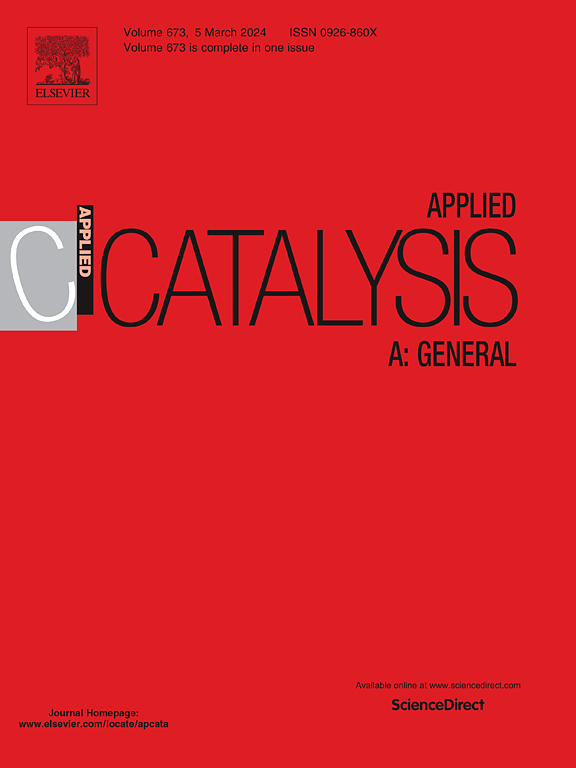葡萄糖加氢二元合金催化剂的机器学习辅助催化性能预测
IF 4.8
2区 化学
Q2 CHEMISTRY, PHYSICAL
引用次数: 0
摘要
山梨醇的生产涉及葡萄糖加氢,这需要葡萄糖和氢在催化剂表面共吸附以获得高的催化性能。二元合金催化剂可以调节衬底吸附,获得比Raney Ni更好的催化性能。在此,我们建立了一种开创性的DFT/ML方法来研究葡萄糖(ΔEGCHO)和H原子(ΔEH)在1155二元合金催化剂上的吸附能。光梯度增强机(LGBM)算法被证明是最有效的ML模型,预测ΔEGCHO和ΔEH的R²分别为0.785和0.636。微动力学模拟证明了催化活性与吸附能之间的相关性,揭示了高性能催化剂的筛选标准为ΔEGCHO = −1.45 ~−0.65 eV和ΔEH = −0.55 ~ 0.00 eV。确定了9种具有较高预测活性的二元合金催化剂,其中以Pd3Mg表现最好。本研究强调了DFT/ ml辅助方法在开发高效葡萄糖加氢二元合金催化剂方面的潜力。本文章由计算机程序翻译,如有差异,请以英文原文为准。
Machine-learning-assisted catalytic performance predictions of binary alloy catalysts for glucose hydrogenation
Sorbitol production involves glucose hydrogenation, which requires co-adsorption of glucose and hydrogen on the catalyst surface for high catalytic performance. Binary alloy catalysts can modulate substrate adsorption to achieve better catalytic performance than Raney Ni. Herein, we established a pioneering DFT/ML approach to investigate the adsorption energies of glucose (ΔEGCHO) and H atoms (ΔEH) on 1155 binary alloy catalysts. The Light Gradient Boosting Machine (LGBM) algorithm proved the most effective ML model, predicting ΔEGCHO and ΔEH with R² values of 0.785 and 0.636, respectively. Microkinetic simulation demonstrated a correlation between catalytic activity and adsorption energy, revealing high-performance catalyst screening criteria as ΔEGCHO = −1.45 to −0.65 eV and ΔEH = −0.55–0.00 eV. Nine possible binary alloy catalysts with high predicted activity were identified, with Pd3Mg performing best. The present study highlights the potential of the DFT/ML-assisted approach in the development of efficient glucose hydrogenation binary alloy catalysts.
求助全文
通过发布文献求助,成功后即可免费获取论文全文。
去求助
来源期刊

Applied Catalysis A: General
化学-环境科学
CiteScore
9.00
自引率
5.50%
发文量
415
审稿时长
24 days
期刊介绍:
Applied Catalysis A: General publishes original papers on all aspects of catalysis of basic and practical interest to chemical scientists in both industrial and academic fields, with an emphasis onnew understanding of catalysts and catalytic reactions, new catalytic materials, new techniques, and new processes, especially those that have potential practical implications.
Papers that report results of a thorough study or optimization of systems or processes that are well understood, widely studied, or minor variations of known ones are discouraged. Authors should include statements in a separate section "Justification for Publication" of how the manuscript fits the scope of the journal in the cover letter to the editors. Submissions without such justification will be rejected without review.
 求助内容:
求助内容: 应助结果提醒方式:
应助结果提醒方式:


